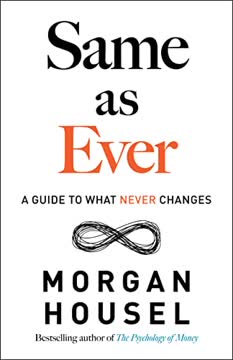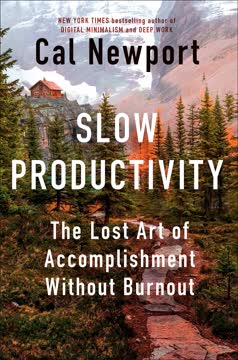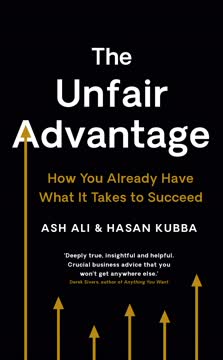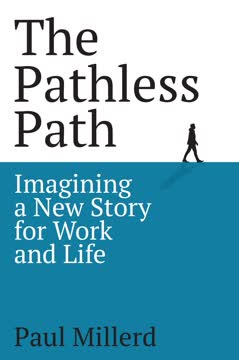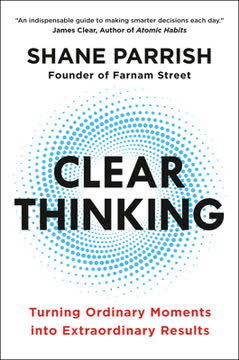ข้อสำคัญ
1. ค้นหาเรื่องราวของคุณ: ช่วงเวลาธรรมดาที่อาจกลายเป็นพิเศษ
"มีช่วงเวลาที่มีความหมายและเปลี่ยนแปลงชีวิตเกิดขึ้นในทุกวันของคุณ ลมที่พัดผ่านอาจดูเหมือนไม่มีค่า แต่ถ้าคุณเรียนรู้ที่จะมองเห็น จับไว้ และเก็บรักษามันไว้ในใจตลอดไป ช่วงเวลานั้นจะกลายเป็นสิ่งสำคัญในชีวิตคุณ"
การบ้านสำหรับชีวิต แบบฝึกหัดง่าย ๆ แต่ทรงพลังนี้ คือการทบทวนแต่ละวันและถามตัวเองว่า "ถ้าฉันต้องเล่าเรื่องราวจากวันนี้ มันจะเป็นเรื่องอะไร?" จดบันทึกช่วงเวลาที่น่าสนใจ แม้จะดูเล็กน้อยก็ตาม การฝึกนี้ช่วยให้คุณ:
- มองเห็นความพิเศษในชีวิตประจำวันผ่านเลนส์ของการเล่าเรื่อง
- สะสมเรื่องราวที่มีศักยภาพมากมาย
- ชะลอเวลาและทำให้ชีวิตรู้สึกกว้างขวางขึ้น
เมื่อทำอย่างสม่ำเสมอ คุณจะค้นพบว่าชีวิตเต็มไปด้วยช่วงเวลาที่มีความหมายซึ่งสามารถกลายเป็นเรื่องราวที่น่าประทับใจได้ ช่วงเวลาที่เล็กน้อยและมักถูกมองข้ามเหล่านี้ มักเป็นสิ่งที่ผู้ฟังเข้าถึงและรู้สึกได้มากที่สุด
2. สร้างเรื่องราวของคุณ: ช่วงเวลาห้าวินาทีคือหัวใจสำคัญ
"เรื่องราวที่ยอดเยี่ยมทุกเรื่อง — ไม่ว่าจะยาวหรือสั้น ลึกซึ้งหรือเรียบง่าย — มักเล่าเรื่องของช่วงเวลาห้าวินาทีในชีวิตของคน ๆ หนึ่ง จุดประสงค์ของเรื่องราวคือการทำให้ช่วงเวลานั้นชัดเจนที่สุดเท่าที่จะเป็นไปได้"
ระบุการเปลี่ยนแปลง ช่วงเวลาห้าวินาทีคือช่วงเวลาสั้น ๆ ที่เกิดการเปลี่ยนแปลง การตระหนักรู้ หรือการเปลี่ยนผ่าน ซึ่งเป็นหัวใจของเรื่องราวของคุณ เพื่อสร้างเรื่องราวที่มีประสิทธิภาพ:
- ค้นหาช่วงเวลาที่มีการเปลี่ยนแปลงอย่างลึกซึ้ง
- เริ่มเรื่องราวจากจุดตรงข้ามกับช่วงเวลานั้นเพื่อสร้างโครงเรื่อง
- จัดโครงสร้างส่วนอื่น ๆ ให้สนับสนุนและเน้นช่วงเวลาสำคัญนี้
ตัวอย่างช่วงเวลาห้าวินาที:
- ตระหนักว่าคุณไม่ได้อยู่คนเดียวในโลกนี้
- ค้นพบความจริงที่ซ่อนอยู่เกี่ยวกับตัวเองหรือผู้อื่น
- ตัดสินใจที่เปลี่ยนแปลงชีวิต
จำไว้ว่า แม้ในเรื่องราวใหญ่ ๆ (เช่น รอดชีวิตจากอุบัติเหตุรถยนต์) ช่วงเวลาที่ทรงพลังที่สุดมักเป็นช่วงเวลาที่เล็กและมีความเป็นมนุษย์ลึกซึ้ง (เช่น เพื่อนที่มาเยี่ยมที่โรงพยาบาลเมื่อครอบครัวไม่มา)
3. ดึงดูดผู้ฟัง: ใช้ความเสี่ยงสร้างความตื่นเต้น
"ความเสี่ยงคือเหตุผลที่ผู้ฟังตั้งใจฟังและอยากฟังต่อ ความเสี่ยงตอบคำถามว่า: ผู้เล่าเรื่องต้องการหรือจำเป็นอะไร? อะไรคือสิ่งที่ตกอยู่ในอันตราย? ผู้เล่าเรื่องกำลังต่อสู้เพื่อหรือกับอะไร? จะเกิดอะไรขึ้นต่อไป? เรื่องราวนี้จะจบอย่างไร?"
กลยุทธ์ห้าข้อในการเพิ่มความเสี่ยง:
- ช้างในห้อง: ระบุความต้องการ ปัญหา หรือปริศนาให้ชัดเจนตั้งแต่ต้น
- กระเป๋าเป้: เติมเต็มผู้ฟังด้วยความหวังและความกลัวก่อนเหตุการณ์สำคัญ
- เศษขนมปัง: ทิ้งเบาะแสเกี่ยวกับเหตุการณ์ในอนาคตเพื่อให้ผู้ฟังคาดเดา
- นาฬิกาทราย: ชะลอเวลาในช่วงสำคัญเพื่อสร้างความตื่นเต้น
- ลูกแก้วคริสตัล: ทำนายผิดเพื่อสร้างความสงสัยเกี่ยวกับผลลัพธ์
การใช้เทคนิคเหล่านี้ช่วยสร้างความรู้สึกเร่งด่วนและทำให้ผู้ฟังมีส่วนร่วมกับผลลัพธ์ ซึ่งช่วยให้พวกเขาติดตามเรื่องราวต่อไป แม้ในเรื่องที่ดูเหมือนไม่ตื่นเต้นโดยธรรมชาติ
4. สร้างความน่าเชื่อถือ: การโกหกอย่างมีชั้นเชิงในการเล่าเรื่องจริง
"ในฐานะผู้เล่าเรื่อง เราโกหกเพื่อประโยชน์ของผู้ฟังเท่านั้น ไม่เคยโกหกเพื่อผลประโยชน์ส่วนตัว เราไม่บิดเบือนความจริง เปลี่ยนแปลงความเป็นจริง หรือเลื่อนเวลาและสถานที่เพื่อประโยชน์ของตัวเอง"
โกหกที่ยอมรับได้ห้าประการ:
- การละเว้น: ตัดรายละเอียดหรือบุคคลที่ไม่จำเป็นออก
- การบีบอัด: ย่อเวลาและสถานที่เพื่อความชัดเจน
- การสมมติ: เดาอย่างมีเหตุผลเกี่ยวกับรายละเอียดที่ลืมไป
- การเรียงลำดับใหม่: เปลี่ยนลำดับเหตุการณ์เพื่อเพิ่มผลกระทบทางอารมณ์
- การผสมผสาน: ย่อการเปลี่ยนแปลงทางอารมณ์ให้เกิดขึ้นในช่วงเวลาสั้น ๆ
การโกหกเหล่านี้ไม่ใช่การสร้างเรื่องเท็จ แต่เป็นการสร้างเรื่องราวที่มีประสิทธิภาพมากขึ้น ช่วยให้:
- เรื่องราวกระชับขึ้น
- ชัดเจนและทรงพลังมากขึ้น
- สร้างประสบการณ์ทางอารมณ์ที่น่าพึงพอใจสำหรับผู้ฟัง
จำไว้เสมอว่า: เป้าหมายคือการรับใช้เรื่องราวและผู้ฟัง ไม่ใช่ทำให้ตัวเองดูดีขึ้นหรือเปลี่ยนแปลงความจริงพื้นฐานของสิ่งที่เกิดขึ้น
5. สร้างภาพยนตร์ในใจ: ใช้กาลปัจจุบันและรายละเอียดชัดเจน
"ในรูปแบบที่ดีที่สุด การเล่าเรื่องคือการเดินทางข้ามเวลา หากฉันทำหน้าที่ได้ดีและเล่าเรื่องได้ยอดเยี่ยม คุณอาจลืมว่าคุณอยู่ในเวลาปัจจุบันและสถานที่นี้ และเดินทางย้อนกลับไปยังปีและสถานที่ที่ฉันกำลังบรรยาย"
วาดภาพให้ชัดเจน เพื่อสร้างประสบการณ์เหมือนภาพยนตร์ในใจผู้ฟัง:
- ใช้กาลปัจจุบันเพื่อสร้างความรู้สึกทันที
- ระบุสถานที่ทางกายภาพอย่างชัดเจนในทุกช่วงเวลา
- ใส่รายละเอียดทางประสาทสัมผัสเพื่อทำให้ฉากมีชีวิตชีวา
- หลีกเลี่ยงการใช้สิ่งที่ทำลายภาพลวงตา เช่น คำถามเชิงวาทกรรม หรือการยอมรับของผู้ฟัง
เคล็ดลับในการรักษาฟองสบู่แห่งการเดินทางข้ามเวลา:
- อย่าถามคำถามเชิงวาทกรรม
- หลีกเลี่ยงการใช้พร็อพ
- ลดบทบาทตัวเองให้น้อยที่สุด (เช่น ใส่เสื้อผ้าที่ไม่โดดเด่น)
การพาผู้ฟังเข้าสู่โลกของเรื่องราวทำให้เรื่องราวน่าติดตามและจดจำได้ดี พวกเขาควรรู้สึกเหมือนกำลังประสบเหตุการณ์ร่วมกับคุณ ไม่ใช่แค่ฟังการเล่าเรื่อง
6. กระตุ้นอารมณ์: ความประหลาดใจคือกุญแจทำให้คนร้องไห้
"เมื่อพูดถึงการเล่าเรื่อง ฉันเชื่อว่าความประหลาดใจคือวิธีเดียวที่จะกระตุ้นปฏิกิริยาอารมณ์จากผู้ฟัง ไม่ว่าจะเป็นเสียงหัวเราะ น้ำตา ความโกรธ ความเศร้า ความไม่พอใจ หรืออารมณ์อื่นใด กุญแจคือความประหลาดใจ"
สร้างความแตกต่าง เพื่อสร้างความประหลาดใจและผลกระทบทางอารมณ์:
- สร้างความคาดหวัง แล้วพลิกกลับ
- ซ่อนข้อมูลสำคัญ แล้วเปิดเผยในเวลาที่เหมาะสม
- ใช้อารมณ์ขันเพื่อปกปิดรายละเอียดสำคัญ
- สร้างความแตกต่างระหว่างช่วงเวลาที่เบาและหนัก
เทคนิคในการรักษาความประหลาดใจ:
- หลีกเลี่ยงการบอกเนื้อเรื่องล่วงหน้าที่ทำให้รู้ตอนจบ
- ใช้ความเสี่ยงเพื่อเพิ่มความตื่นเต้น
- เลือกวางข้อมูลสำคัญในจุดที่เหมาะสมของเรื่องราว
จำไว้ว่า เป้าหมายไม่ใช่แค่ทำให้คนร้องไห้หรือหัวเราะ แต่คือการพาพวกเขาเดินทางผ่านอารมณ์ เรื่องราวที่ทรงพลังที่สุดมักผสมผสานอารมณ์ขันและความเจ็บปวด สร้างประสบการณ์ที่ลึกซึ้งและหลากหลายสำหรับผู้ฟัง
7. ปรับปรุงการเล่าเรื่อง: เลือกคำอย่างระมัดระวังและหลีกเลี่ยงสิ่งรบกวน
"คำที่คุณเลือกใช้จะมีผลต่อการรับรู้ของผู้ฟัง และส่งผลต่อความคิดเห็นที่พวกเขามีต่อคุณ"
การเลือกใช้คำอย่างมีสติ ให้พิจารณาแนวทางเหล่านี้เมื่อสร้างและเล่าเรื่อง:
คำหยาบ:
- ใช้เท่าที่จำเป็น หรือไม่ใช้เลย
- ใช้เฉพาะเมื่อเป็นคำที่เหมาะสมที่สุดหรือในบทสนทนาที่แท้จริง
คำหยาบคาย:
- หลีกเลี่ยงรายละเอียดที่อาจทำให้ผู้ฟังรู้สึกไม่สบายใจ
- ใช้คำอ้อมและอารมณ์ขันเพื่อจัดการกับเรื่องละเอียดอ่อน
ชื่อและการอ้างอิง:
- เปลี่ยนชื่อเพื่อปกป้องความเป็นส่วนตัวเมื่อจำเป็น
- หลีกเลี่ยงการเปรียบเทียบกับคนดังซึ่งอาจทำให้ผู้ฟังรู้สึกแปลกแยกหรือเสียสมาธิ
สำเนียง:
- โดยทั่วไปหลีกเลี่ยงการเลียนแบบสำเนียง โดยเฉพาะของวัฒนธรรมอื่น
- ยกเว้นการเลียนแบบสำเนียงของพ่อแม่ ปู่ย่าตายาย หรือภูมิภาคของตัวเอง
ด้วยการใส่ใจในภาษาและการเล่าเรื่อง คุณจะรักษาความน่าเชื่อถือและทำให้ผู้ฟังโฟกัสกับเรื่องราว แทนที่จะถูกเบี่ยงเบนด้วยสิ่งที่อาจรบกวนหรือไม่เหมาะสม ซึ่งช่วยให้ข้อความของคุณเข้าถึงผู้ฟังได้กว้างขวางที่สุด
อัปเดตล่าสุด:
FAQ
What's Storyworthy about?
- Focus on Storytelling: Storyworthy by Matthew Dicks is a comprehensive guide to mastering storytelling, emphasizing its power to engage, teach, persuade, and transform lives.
- Personal Narratives: The book encourages readers to discover and share their personal stories, asserting that everyone has a story worth telling.
- Practical Techniques: It offers practical exercises like "Homework for Life" to help readers identify and craft their stories effectively.
Why should I read Storyworthy?
- Enhance Communication Skills: The book can significantly improve your storytelling and communication skills, making you more engaging in various settings.
- Relatable and Accessible: Dicks uses humor and relatable anecdotes to make storytelling concepts easy to understand and apply.
- Transformative Experience: It encourages self-reflection and personal growth, helping readers connect with their own experiences and those of others.
What are the key takeaways of Storyworthy?
- Five-Second Moments: Great stories revolve around a five-second moment of transformation or realization, which is crucial to highlight.
- Finding Your Story: Techniques like "Homework for Life" help identify meaningful moments from daily life to turn into stories.
- Crafting and Telling: The book outlines how to structure stories with stakes and emotional resonance to captivate audiences.
What is "Homework for Life" in Storyworthy?
- Daily Reflection: This exercise involves reflecting on your day to identify the most storyworthy moment, fostering appreciation for small experiences.
- Story Collection: Consistent practice builds a collection of potential stories, training your mind to find stories in everyday life.
- Emotional Connection: It deepens your emotional connection to life experiences, making them easier to share with others.
How does Matthew Dicks define a story in Storyworthy?
- Transformation Over Time: A story is a narrative reflecting change over time, focusing on a moment of transformation or realization.
- Personal Narrative: Stories should be personal and authentic, allowing deeper connection with the audience.
- Not Just Events: A story must convey meaning and evoke emotions, not just recount events.
What are the "Five Permissible Lies" in storytelling according to Storyworthy?
- Artistic License: Storytellers can manipulate truth to enhance the narrative without personal gain, such as altering details for clarity.
- Types of Lies: These include exaggeration, omission, substitution, embellishment, and misdirection, all serving to enhance storytelling.
- Audience Engagement: These lies engage the audience, ensuring the story's essence remains intact.
What is the significance of the "Elephant" in storytelling in Storyworthy?
- Clear Stakes: The "Elephant" represents the central problem or mystery, setting the stage for the story.
- Immediate Engagement: Introducing the Elephant early captures attention and creates anticipation.
- Changing Color: The Elephant can change color, indicating shifts in focus or theme, keeping the audience engaged.
What is the But-and-Therefore Principle in Storyworthy?
- Causation in Storytelling: This principle helps create narrative momentum by connecting events with "but" and "therefore" to show causation.
- Enhancing Engagement: It maintains audience interest and emotional investment through a dynamic flow of events.
- Example in Practice: Dicks uses examples to show how this principle transforms mundane narratives into compelling tales.
How does Storyworthy address the concept of memory?
- Memory as Slippery: Dicks discusses how memory changes over time, affecting story accuracy, and emphasizes acknowledging these imperfections.
- Strategic Inaccuracies: Some inaccuracies can enhance the story while remaining rooted in truth.
- Collaboration for Accuracy: Involving others in recalling shared experiences can clarify memories and enrich storytelling.
How can I identify my own five-second moments according to Storyworthy?
- Reflect on Personal Experiences: Look back on life to find pivotal moments that evoke strong emotions.
- Use Homework for Life: Document daily experiences to identify storyworthy moments, recognizing the significance of ordinary events.
- Practice Storytelling: Share these moments with others to refine storytelling skills and make them more impactful.
What role does humor play in Storyworthy?
- Enhancing Engagement: Humor keeps the audience engaged and creates contrast during serious moments.
- Creating Emotional Connections: Laughter builds rapport, making the audience more receptive to the story.
- Surprise Element: Humor often relies on surprise, similar to other emotional responses, and should complement the story's core.
How does Storyworthy suggest handling difficult or sensitive topics in storytelling?
- Authenticity and Vulnerability: Be authentic and vulnerable, sharing personal struggles to connect deeply with the audience.
- Strategic Use of Humor: Use humor to lighten the mood, helping the audience process emotions without feeling overwhelmed.
- Focus on Meaning: Highlight personal growth or insight from difficult experiences to create impactful narratives.
รีวิว
หนังสือเล่มนี้ได้รับคำชื่นชมอย่างกว้างขวาง โดยเฉพาะในเรื่องคำแนะนำที่นำไปใช้ได้จริงในการสร้างเรื่องราวที่น่าติดตาม ผู้อ่านหลายคนชื่นชอบเทคนิคของผู้เขียน เช่น แบบฝึกหัด "การบ้านเพื่อชีวิต" และการค้นหาช่วงเวลาสำคัญเพียง 5 วินาทีในเรื่องราว บางคนอาจรู้สึกว่าหนังสือมีเนื้อหาซ้ำซากหรือดูเหมือนผู้เขียนชมตัวเองเกินไป แต่ก็มีอีกหลายคนที่เห็นคุณค่าในแนวคิดเหล่านี้ซึ่งช่วยพัฒนาทักษะการสื่อสารทั้งในชีวิตส่วนตัวและการทำงาน หนังสือเสียงที่ผู้เขียนบรรยายเองยังช่วยเพิ่มอรรถรสในการฟังให้กับผู้ชมโดยรวม หนังสือเล่มนี้จึงถือเป็นแหล่งความรู้ที่มีประโยชน์อย่างยิ่งสำหรับผู้ที่ต้องการเป็นนักเล่าเรื่องที่ดีขึ้น นักพูดในที่สาธารณะ และผู้ที่อยากพัฒนาทักษะการสื่อสารระหว่างบุคคลให้ดียิ่งขึ้นไปอีกด้วยเช่นกัน
Similar Books
